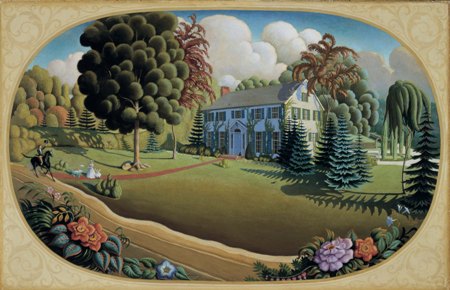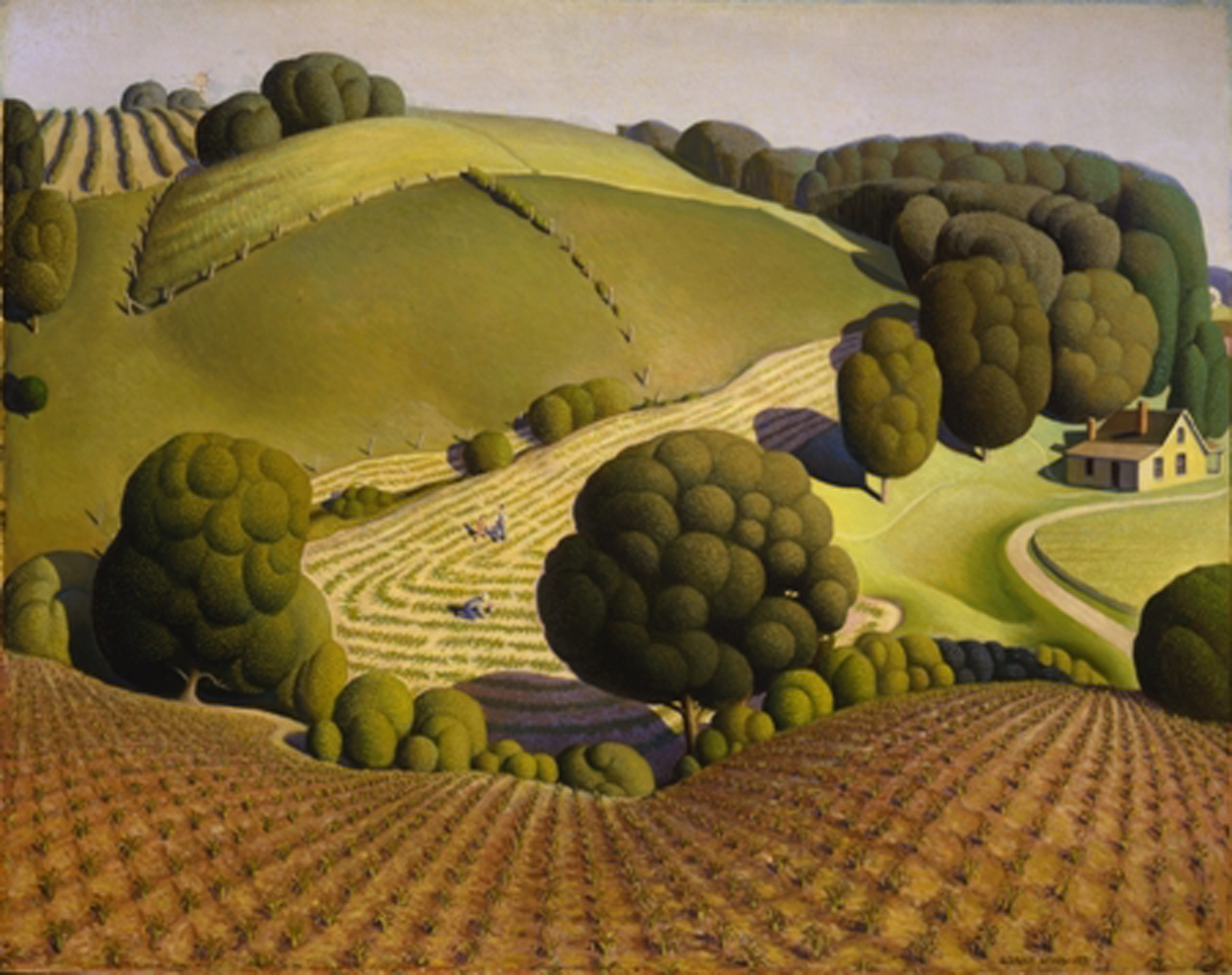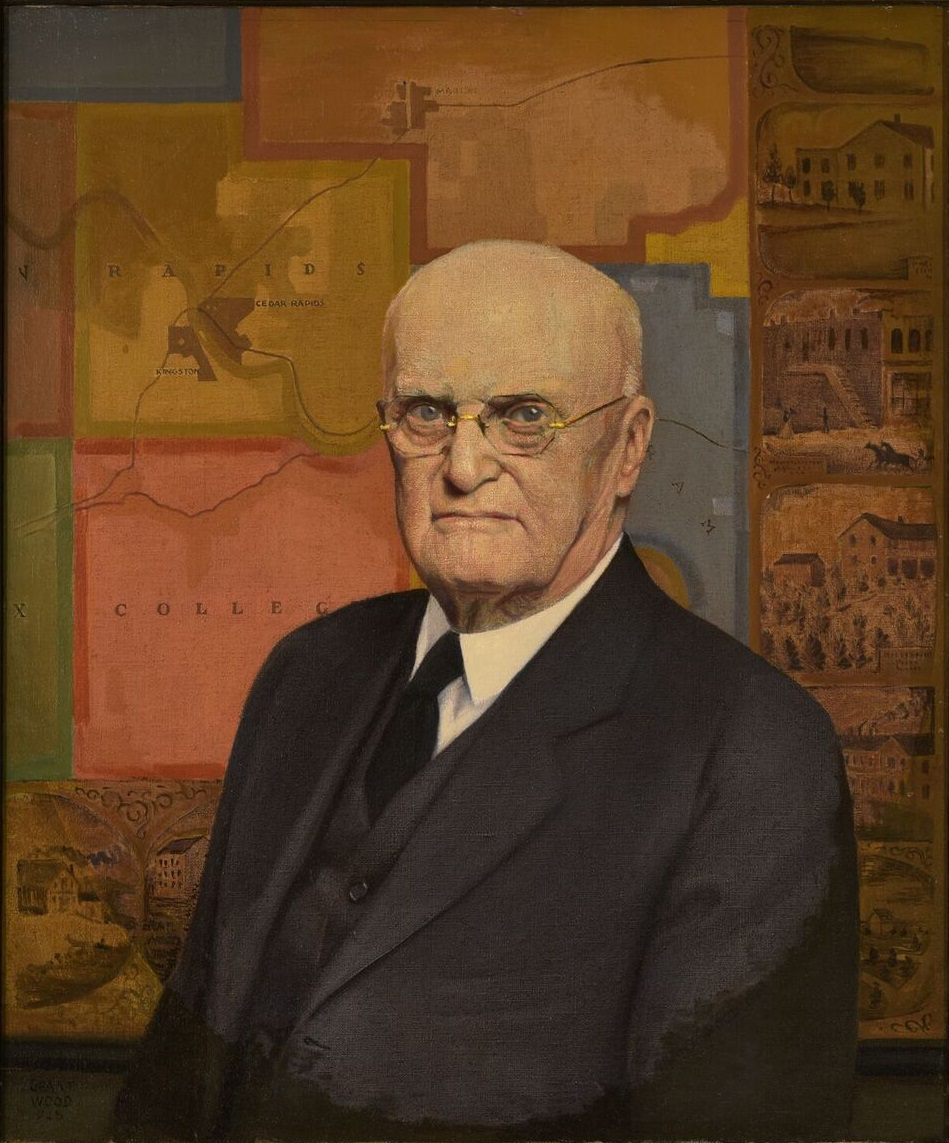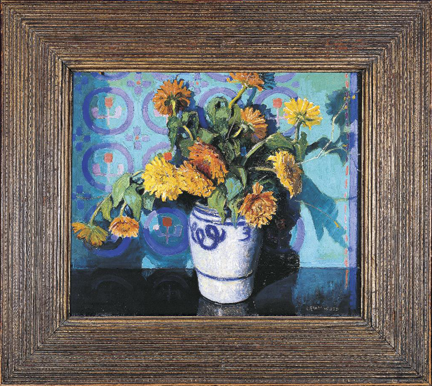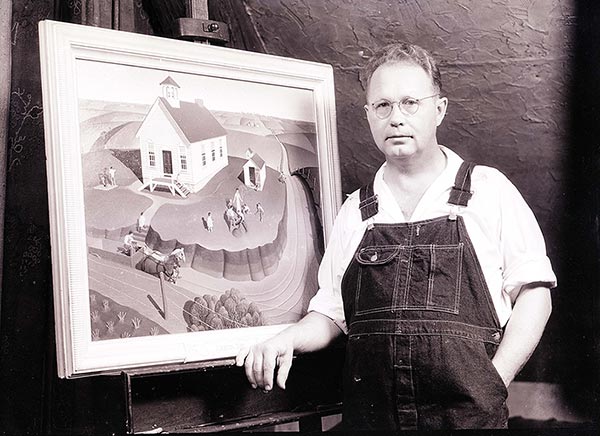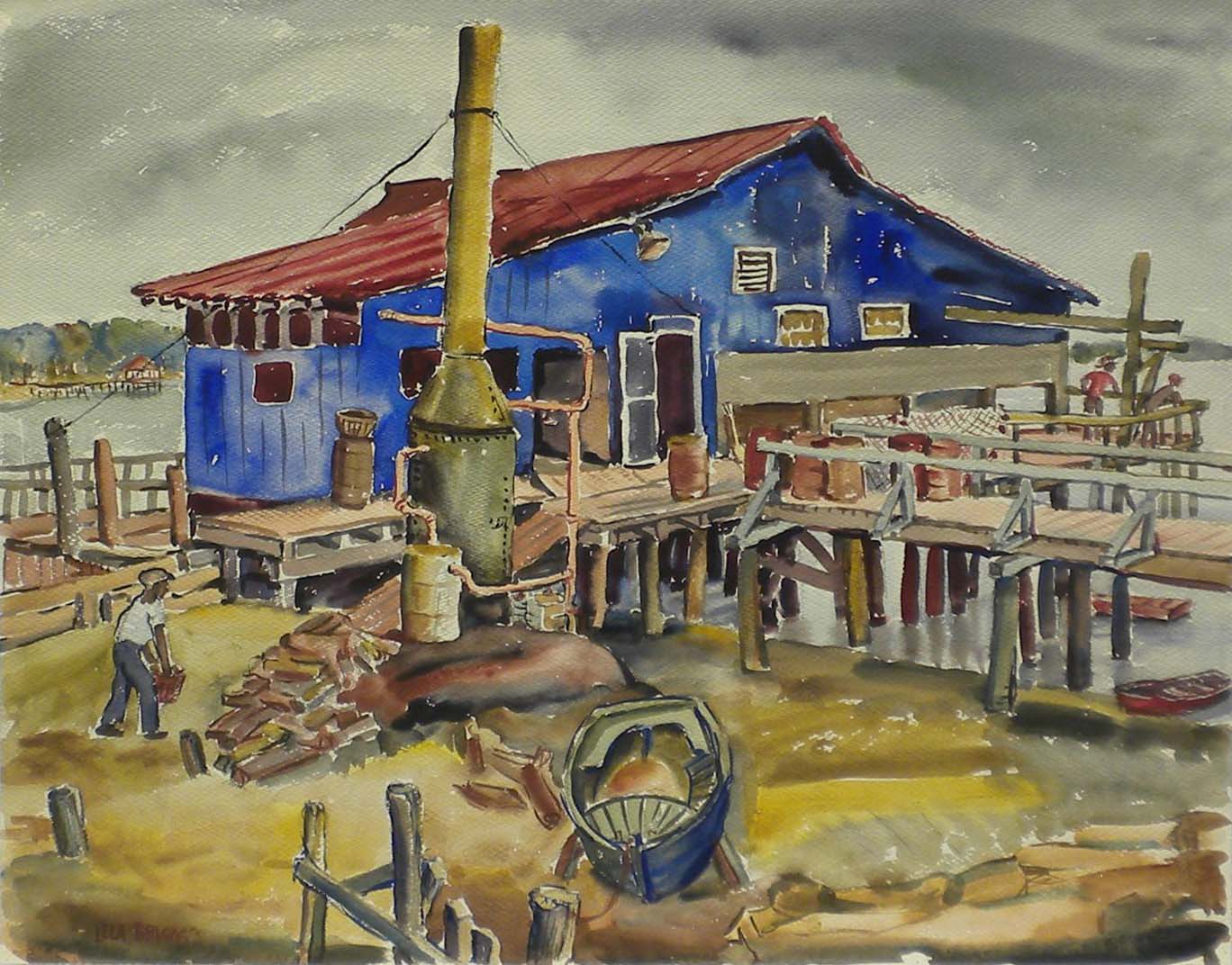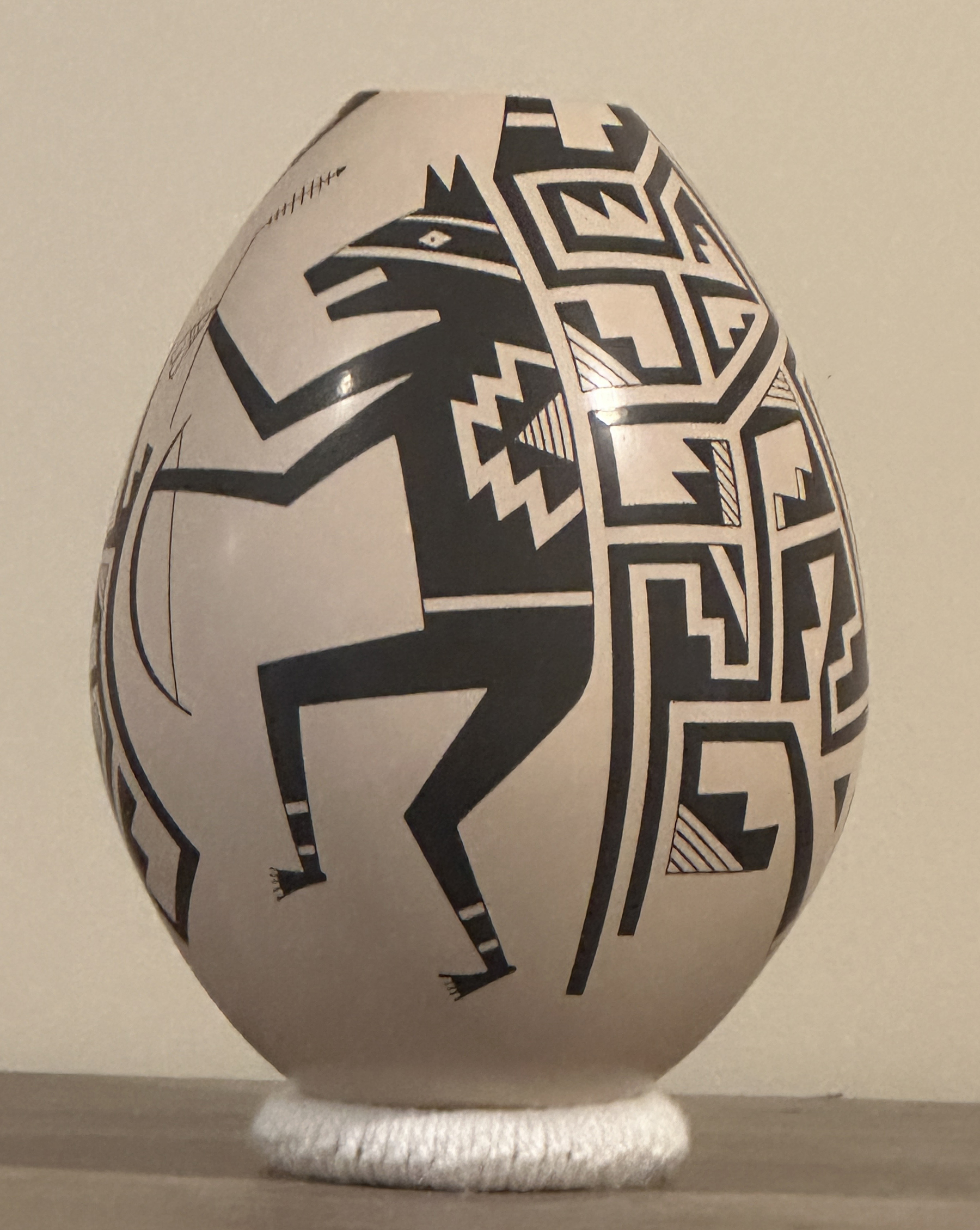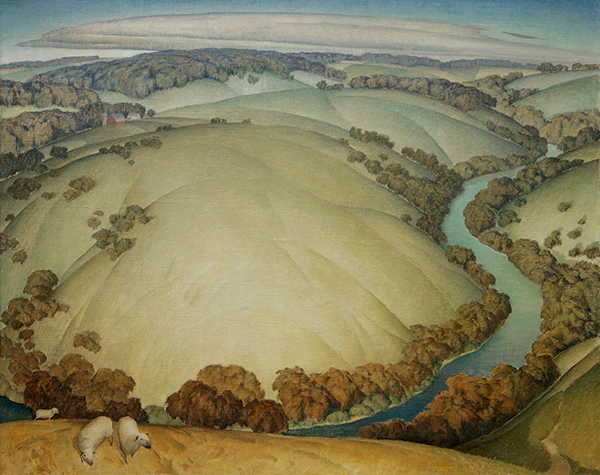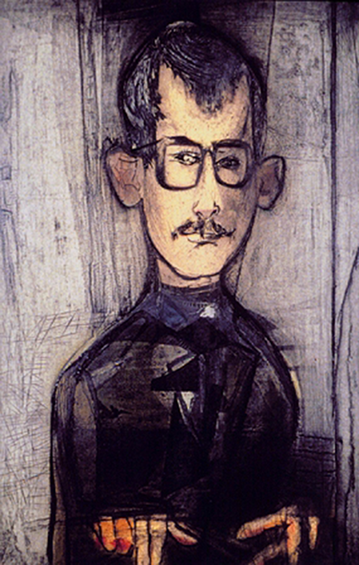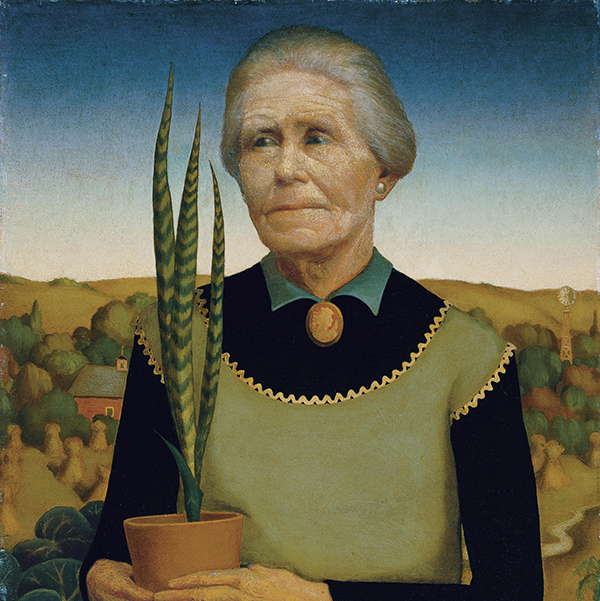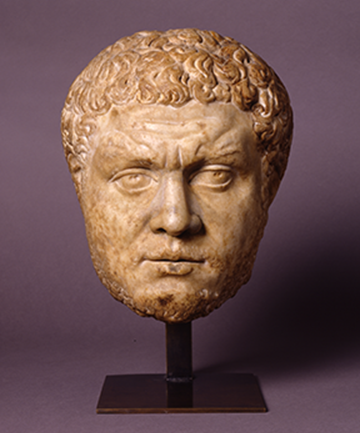Grant Wood
1891-1942
Grant Wood was born on a farm near Anamosa, Iowa. After his father's death in 1901, the Wood family moved to Cedar Rapids. Wood spent most of his life in Cedar Rapids, and it was here he first developed his artistic aspirations. As a youth growing up in this small but burgeoning Midwestern city, his teachers and the community applauded Wood’s talent for drawing and making clever objects.
Wood attended Washington High School and, together with his good friend and fellow artist, Marvin Cone (1891-1965), painted scenery for school plays and illustrated school publications. The two young artists also assisted with the installation of exhibitions at the Cedar Rapids Art Association, originated in 1895 and located in the Carnegie Library.
While in high school, Wood taught himself to make jewelry, copperware, ornamental light fixtures, and furniture. Following his 1910 high school graduation, Wood completed two summers of study at the School of Design, Handicraft, and Normal Art (now the Minneapolis School of Art and Design). In 1913 he moved to Chicago to study at the School of the Art Institute, but by 1916, due to financial difficulties, Wood returned to Cedar Rapids.
